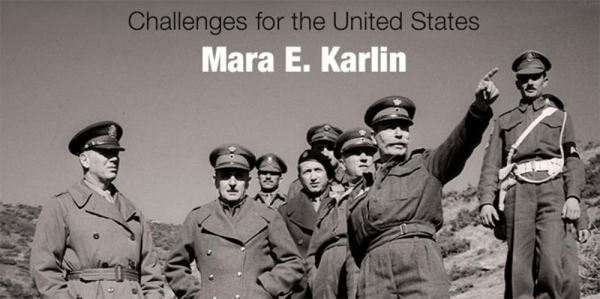

In 2014, much of the Iraqi Army dissolved as ISIS overran Iraqi cities like Ramadi and Mosul. After more than a decade of U.S. training and more than $20 billion in assistance to strengthen the force, training was for naught as Iraqi soldiers fled battles and holed up in their homes, military leadership disappeared, and nearly three divisions worth of equipment were abandoned to the Islamic State. Yet another example of U.S. efforts to build militaries in fragile states had failed.
University of Pennsylvania Press

Since World War II, the United States has often responded to faltering internal security situations by training and equipping partner militaries. It will continue to do so given U.S. sensitivity toward casualties, a con- strained fiscal environment, the nature of modern nationalism, increasing transnational security threats, and the proliferation of fragile states. And, policymakers’ increased focus on competitors such as China and Russia only heightens the need to stabilize fragile states cheaply—in blood and in treasure. Yet the U.S. track record for building militaries in fragile states is uneven at best.
The United States generally approaches the problem of building militaries in fragile states by emphasizing training and equipment, and by distancing itself from key political issues. This method wastes time, effort, and resources. Examples spanning Europe, Asia, and the Middle East illustrate the flaws in the traditional way of working with foreign militaries. Confusion over the partner military’s mission plagued the U.S. program to build South Vietnam’s military in the 1950s, as did the blowhard leading the U.S. program in Saigon, “Hanging Sam” Williams. Getting those right may have precluded the drawn out and costly U.S. war there. In the 1980s, U.S. officials in Beirut and Washington couldn’t agree on the parameters of U.S. involvement; this disunity laid the groundwork not only for a tortured program, but also for the deaths of hundreds of American military and diplomatic personnel. A senior U.S. military official in Beirut sought to have the military commander conduct a coup and another tried to establish a slush fund following his resignation. U.S. resistance to meaningfully counter states undermining Lebanese sovereignty like Syria, Iran, and Israel further exacerbated the situation. And two decades later, a similar program was characterized by limited U.S. involvement in Lebanese military affairs, resulting in limited—and insufficient—progress.
However, the United States can achieve meaningful results. Deep U.S. involvement within certain parameters—namely, not one that slides into becoming a co-combatant, but nonetheless allows the United States to influence sensitive military affairs like personnel and organizational structure around an agreed-upon mission—can transform partner militaries. This approach is particularly effective when accompanied by a positive shift in the external threat environment. Just after World War II, the United States worked with Greece to reorganize its military in line with its internal defense mission and to ensure capable and forward-leaning military leaders were appointed to the right positions. The U.S. program was led by James Van Fleet, a capable and charismatic individual who understood that unity of vision between Americans in Greece and Washington was critical to success. This enabled the Greek military to take advantage of decreased antagonism by bordering states.
The United States will continue wrestling with the dilemmas posed by weak states. And if it hopes to improve its track record, there is much to be changed.
Excerpted, with permission, from Building Militaries in Fragile States: Challenges for the United States by Marla Karlin,University of Pennsylvania Press. Copyright 2017.
